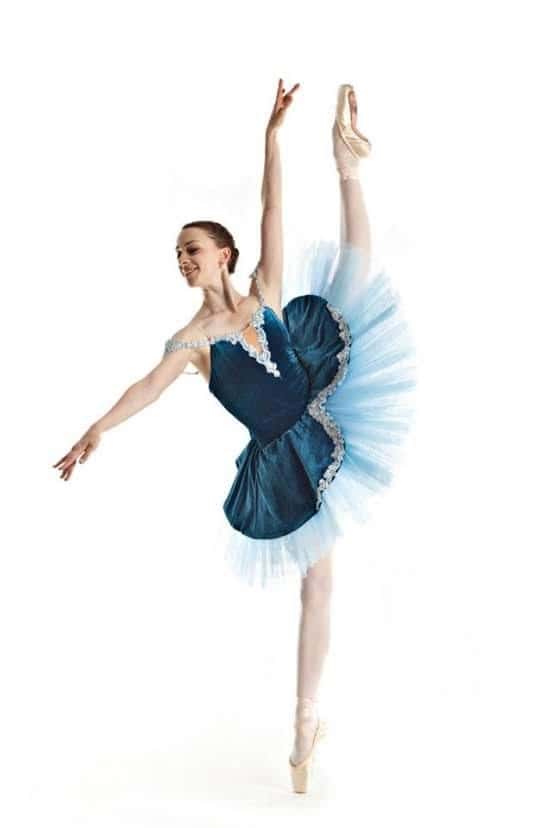Ballet Developpe – How to Perfect Your Technique
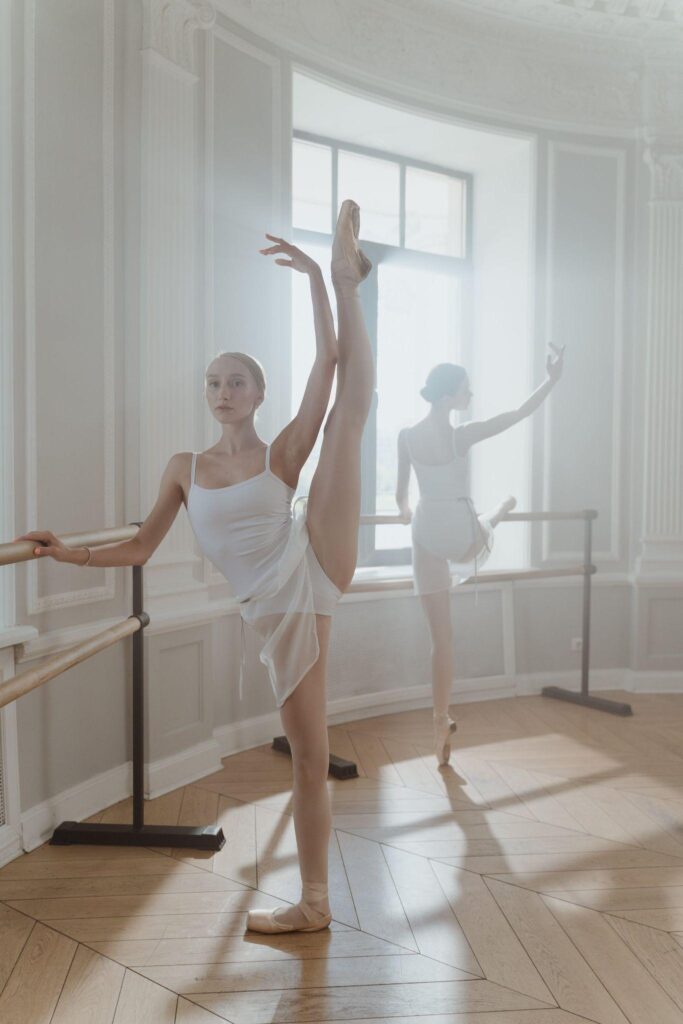
The beauty of a ballet developpe lies in a dancer’s ability to create mesmerising lines and convey a sense of weightlessness, as if to defy gravity.
However, achieving this is far from simple!
In this blog post, I’ll provide you with beginner and professional tips to master your ballet developpe technique.
WHAT IS A BALLET DEVELOPPE?
A Ballet Developpe is a ballet movement that involves extending and unfolding the working leg from a retire position to an open position towards the front, side, or back.
Originating from the French word meaning ‘to develop’, this ballet movement requires precise control, strength, and flexibility.
Once dancers grasp the fundamental principles of this movement, they can learn to extend their legs into developpes.
It’s worth noting that achieving a beautifully high developpe isn’t solely reliant on flexibility. It also requires a strong supporting base, including the strength of the core, hip flexors, and quadriceps.
COMMON BALLET DEVELOPPE MISTAKES
Here are three common ballet developpe mistakes that can be easily avoided with practice and precision.
DROPPING THE RETIRE LEG
The first common mistake during a ballet developpe is the failure to uphold a high retire position before extending the working leg.
When the retire leg sags or drops, a developpe becomes extremely difficult.
Initially, the leg muscles remain disengaged, and the working leg remains closer to the ground, due to the force of gravity. As the working leg begins to unfold, trying to extend or lift your leg becomes challenging as your legs are now heavy.
The outcome is usually a trembling leg, with the quadriceps trying to carry the load alone.
Not fun!
TUCKING THE PELVIS
The second common mistake is when dancers resort to tucking their pelvis in an attempt to attain a higher developpe position.
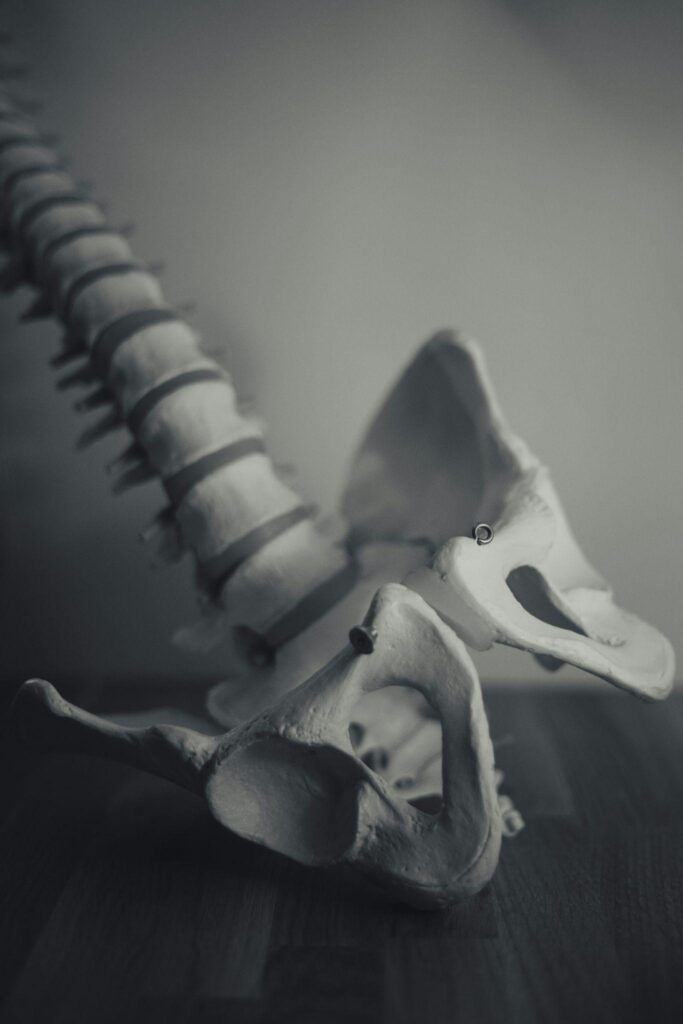
Contrary to aiding the movement, this adjustment complicates it further.
Tucking the pelvis disrupts its neutral alignment and restricts the leg’s range of motion in the hip sockets.
The leg is likely lifted into a turned-in position, with the bum sticking outwards (not a good look).
LEANING INTO THE SUPPORTING SIDE
The third common mistake is leaning into the supporting side.
This creates an imbalance within the body, as there is insufficient support on the working side, resulting in a lack of proper alignment and a pulled-up position.
Leaning into the supporting side also leads to instability, especially from the barre to the centre.
Additionally, from a visual perspective, leaning to one side detracts significantly from the beauty of this movement, as it displaces the body completely and disrupts the elegant lines associated with a ballet developpe.
BALLET DEVELOPPE TIPS FOR BEGINNER DANCERS
Here are three tips for beginner dancers to incorporate into your daily practice to achieve a correct ballet developpe technique.
TIP 1 – STRENGTHEN YOUR HIP FLEXORS
The primary muscles engaged during leg extensions are the hip flexors or the iliopsoas.
These muscles are instrumental in hip flexion, which involves lifting the legs above 90 degrees.
The bottom line, strong hip flexors equal high extensions!
RECOMMENDATION
Begin by facing the barre, and lift the leg to retire while maintaining support on your standing leg
From the retire position, engage the hip flexor and raise the knee into an attitude a la seconde (the midpoint of a full extension).
Return the leg to retire and repeat the sequence ten times on each side.

This particular exercise is great for improving your developpe extensions a la seconde, by ultimately loading the hip flexors from a retire position.
TIP 2 – PRACTISE UNFOLDING THE LEG FROM RETIRE
Now that you’ve found those hip flexors, the next step is to practise fully extending the leg from a retire.
RECOMMENDATION
A highly effective method to target and isolate specific muscle groups involves lying on the floor or using a floor barre.
To start, lie on your back with your hips squared and in a neutral position.
Begin by drawing the leg to retire, then attitude, extend it into a developpe either in devant or a la seconde.
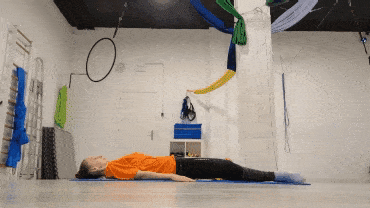
This exercise is an excellent tool for technical training and strengthening the precise muscles required for executing a standing developpe.
TIP 3 – PROPER ALIGNMENT
Achieving a high ballet developpe requires proper alignment.
This is crucial not only for ease of movement and support but also for ballet aesthetics.
While slightly adjusting the pelvis to create space is natural, distorting the pelvis completely will not give you the correct turned-out ballet extension.
RECOMMENDATION
To obtain proper alignment, we need to go back to the basics.
Ask yourself: are you correctly aligned when you perform a tendu?
If not, performing a ballet developpe will be the same.
The most effective method to ensure proper alignment is to revisit the basics, which means stepping back to the barre.
Use the mirror to correct your form. Focus on using your rotation, lifting out of your supporting leg, engaging the core, and keeping your hips and shoulders square.
The barre is key to practising the necessary fundamentals.
BALLET DEVELOPPE TIPS FOR ADVANCED DANCERS
Here are three tips for advanced dancers, that build on the basic principles of a ballet developpe, that can be incorporated into your daily practise to perfect this movement further.
TIP 1 – STRONG OBLIQUES
When we start lifting our legs away from our centre, it’s essential to engage the sides of our bodies for added support and to avoid dipping.
This is where the abdominals, particularly the obliques, need to be strong.
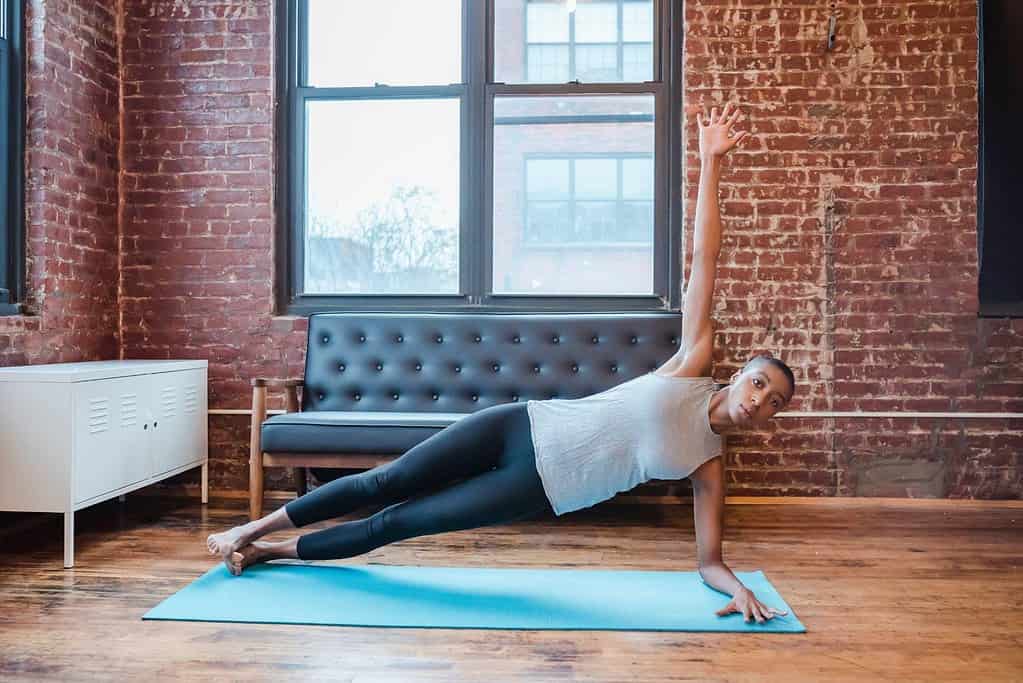
RECOMMENDATION
An excellent exercise for dancers to strengthen the obliques is by performing side planks.
Numerous variations can increase the level of difficulty and challenge your balance and control whilst keeping proper form and alignment.
Begin by lying on your side on the floor. Stack your feet on top of each other and place your elbow directly beneath your shoulder.
Lift your hips off the ground, forming a straight line from head to heel.
Hold this position and begin to lower your hips down to the floor and back up to the side plank position.
Repeat 12 repetitions on each side.
For an extra challenge, hold the side plank while adding a side developpe extension while keeping your hips lifted off the floor. Perform 5 developpes before switching to the other side.
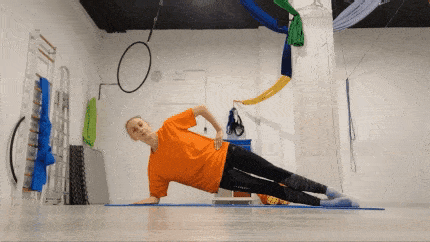
TIP 2 – LIFTING THE LEG OFF THE BARRE
Did you know that once your legs are above 90 degrees, they are much easier to lift?
This is because of gravity.
However, working within a 90-degree range can be an effective way to challenge and strengthen the hip flexors, quadriceps, and core muscles needed for leg extensions.
Who’s up for the challenge?
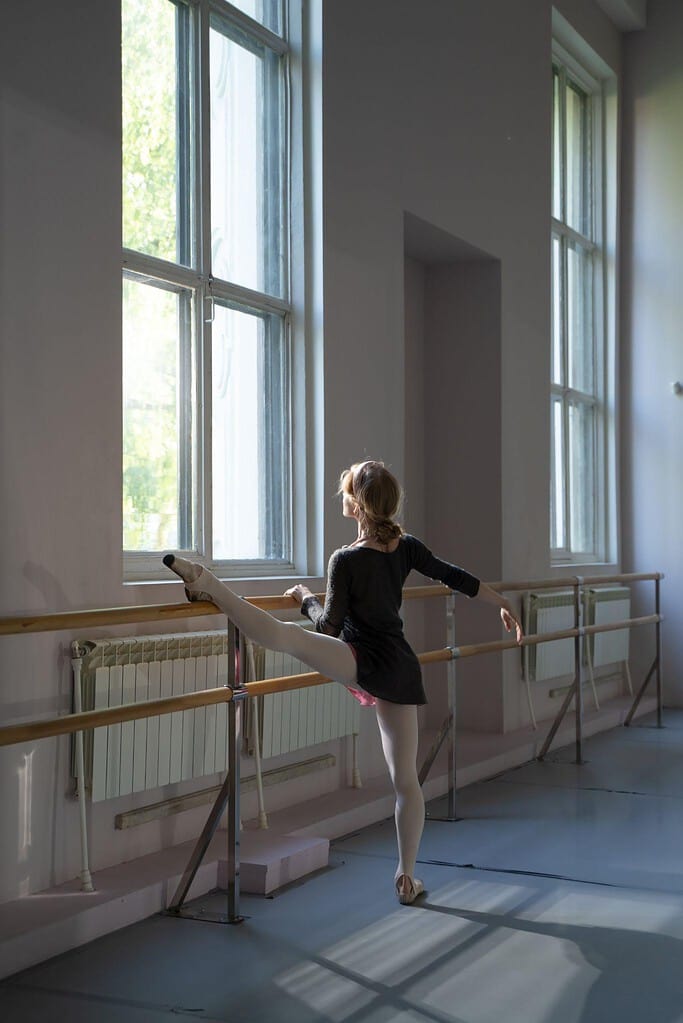
RECOMMENDATION
Begin by placing one leg onto the barre in a rotated develop a la seconde position.
Now, here comes the challenge – lift your leg off the barre by engaging your core and hip flexors.
Lower the leg and repeat up to 8 times on each side. This movement can also be performed in devant and arabesque positions.
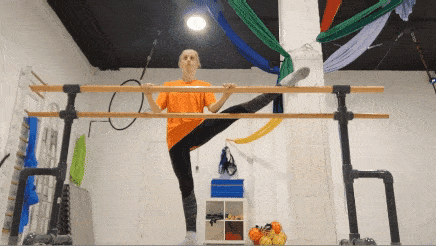
It’s important to note that initially, this movement may be quite small. However, with consistent practice and time, you will begin to notice an increase in the height at which you can lift your leg away from the barre.
TIP 3 – IMPROVE YOUR HAMSTRING FLEXIBILITY
Lifting your legs requires a high level of strength in your legs and hips, but we also need one more ingredient.
A touch of flexibility.
Without flexibility, we have a limited range of motion and the hamstring muscles need to be strong but flexible.
RECOMMENDATION
The supine hamstring stretch is a great dynamic stretch that helps improve flexibility and range of motion in the hamstrings.
To perform this stretch, lie on your back with both legs extended along the floor.
Bend one knee and bring it towards the chest, clasping your hands around the back of your thigh or calf.
Slowly straighten the leg as much as possible.
Hold the stretch for a few seconds, feeling a gentle pull along the back of the thigh.
Release the stretch and repeat up to 5 times before switching legs.

WRAP UP
As dancers, we are constantly looking for ways to improve and refine our technique.
Mastery takes time and consistent practice.
With the right tools and proper guidance, achieving an above 90-degree ballet leg extension is more than possible.
Try the tips out and you’ll be well on your way to perfecting developpe in ballet.
High legs … Here we come!
